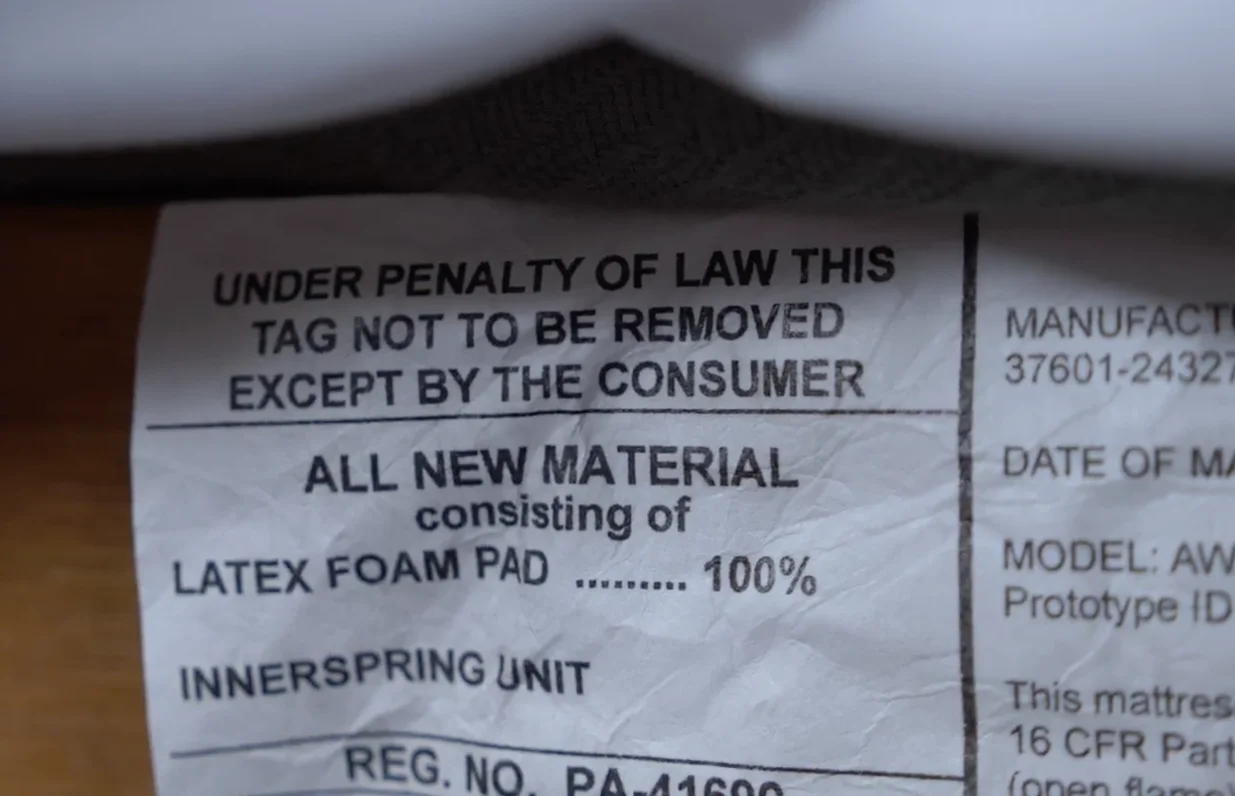Have you ever noticed your mattress has a tag that says you shouldn’t remove it “under penalty of law?” And possibly wondered how in the world the simple act of cutting off a pesky tag could land you with a federal violation? Well have no fear, that tag isn’t for you (the consumer).
The Purpose of the Mattress Tag
The mattress tag is directed at the manufacturers, retailers, and salespeople that sell beds. The tag serves two main purposes:
- It lets customers know they’re buying a new, never been-used-before mattress
- It lets the consumer know what materials are inside the mattress
The Back Story
A lot of laws are imposed to stop an existing act from occurring, right? Well, it’s no different with the mattress tags. Reports say in the early 20th century, some manufacturers were building mattresses with not-so-savory materials to save money on production costs — like food waste, newspapers, old rags, horse hair, and more. Along with being gross and unsanitary, this contributed to fear of social diseases spreading at the time. The government responded to the health risk by requiring tags that stated what was in the mattresses.
However, just as I do with a brand new pair of leggings, these shady mattress makers simply ripped those tags off to keep their sales moving. This led the government to fire back with the new rule that these tags were protected under the Federal Trade Commission Act and couldn’t be removed under penalty of law.
Because the harsh warning caused some confusion for people setting up their new beds at home, lawmakers updated the language in recent decades to say the tags are not to be removed “except by the consumer.”

Importance of Knowing the Materials
Having the exact materials listed on the mattress tag is important for various reasons. It not only brings peace of mind knowing there aren’t added chemicals (or food waste) in the bed you’re sleeping on every night, but there are also plenty of people who could be allergic to certain materials and fibers.
Organic mattresses are also becoming very popular in the bedding industry, as shoppers crave more eco-friendly products. It’s one thing for a company to claim their product is ethically made with sustainable materials, but the mattress tag is the proof to back up that claim.
See some of our favorite organic mattresses here.
Why you Still Shouldn’t Remove the Tag
Despite the warning on the label not being pointed at the mattress buyer, it still is a good idea to keep it in place. That’s because removing it could void your mattress warranty.
To put it simply, warranties generally cover your mattress if it turns out to be defective, but there are often requirements to keep the warranty valid. The rules and language differ from brand to brand, so I recommend checking your warranty to see if removing the tag violates it. Or just cover that bad boy up with a sheet and play it safe.
Learn more about the ins and outs of buying a mattress in our handy guide.


























